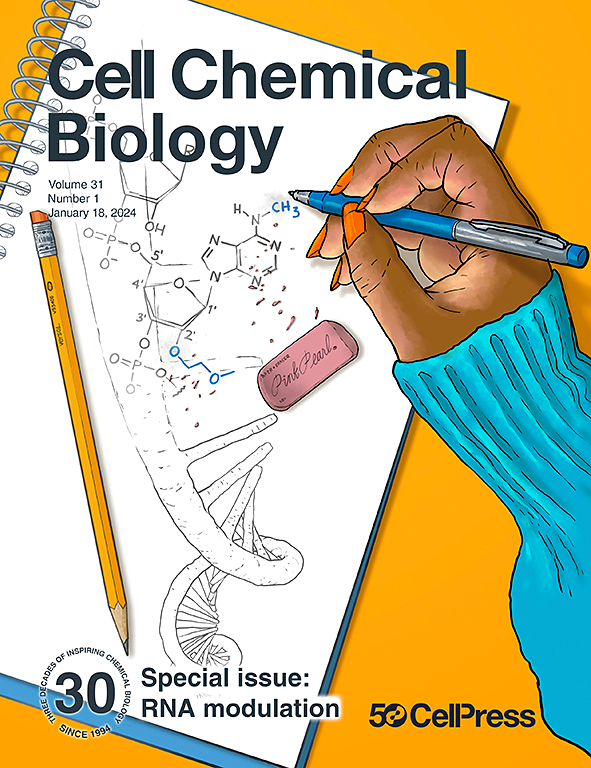Plasmodium falciparum protein kinase 6 and hemozoin formation are inhibited by a type II human kinase inhibitor exhibiting antimalarial activity
IF 7.2
1区 生物学
Q1 BIOCHEMISTRY & MOLECULAR BIOLOGY
引用次数: 0
Abstract
Kinase inhibitors are potent therapeutics, but most essential Plasmodium kinases remain unexploited as antimalarial targets. We identified compound 12, a type II kinase inhibitor based on aminopyridine and 2,6-benzimidazole scaffolds, as a lead compound with nanomolar potency, fast action, and in vivo activity in the Plasmodium berghei rodent malaria model. Three-hybrid luciferase fragment complementation, enzymatic studies, and cellular thermal shift assays implicated Plasmodium protein kinase 6 (PfPK6) as the target. However, conditional knockdown of PfPK6 did not alter 12 potency, suggesting complex mechanisms of action. In vitro selection for compound 12 resistance revealed mutations in three transporters: multidrug-resistance protein 1, chloroquine resistance transporter and V-type ATPase, indicating a digestive vacuole site of action. Compound 12 inhibited β-hematin and hemozoin formation while increasing free heme levels, suggesting antimalarial activity via blockade of heme detoxification. Our studies repurpose a safe human kinase inhibitor as a potent, fast-acting antimalarial with established in vivo efficacy.


一种具有抗疟活性的II型人激酶抑制剂可抑制恶性疟原虫蛋白激酶6和血色素的形成
激酶抑制剂是有效的治疗药物,但大多数基本的疟原虫激酶仍未被开发为抗疟疾靶点。我们发现化合物12是一种基于氨基吡啶和2,6-苯并咪唑支架的II型激酶抑制剂,作为一种具有纳米摩尔效价、快速作用和体内活性的先导化合物,用于伯氏疟原虫啮齿动物疟疾模型。三杂交荧光素酶片段互补、酶学研究和细胞热移分析表明,疟原虫蛋白激酶6 (PfPK6)是靶标。然而,PfPK6的条件敲除并未改变其效力,表明其作用机制复杂。对化合物12耐药的体外筛选发现,多药耐药蛋白1、氯喹耐药转运蛋白和v型atp酶三个转运体发生突变,表明其作用于消化液泡部位。化合物12抑制β-血红素和血色素的形成,同时增加游离血红素水平,表明通过阻断血红素解毒而具有抗疟疾活性。我们的研究将一种安全的人类激酶抑制剂作为一种有效的、快速的抗疟疾药物,具有体内药效。
本文章由计算机程序翻译,如有差异,请以英文原文为准。
求助全文
约1分钟内获得全文
求助全文
来源期刊

Cell Chemical Biology
Biochemistry, Genetics and Molecular Biology-Molecular Medicine
CiteScore
14.70
自引率
2.30%
发文量
143
期刊介绍:
Cell Chemical Biology, a Cell Press journal established in 1994 as Chemistry & Biology, focuses on publishing crucial advances in chemical biology research with broad appeal to our diverse community, spanning basic scientists to clinicians. Pioneering investigations at the chemistry-biology interface, the journal fosters collaboration between these disciplines. We encourage submissions providing significant conceptual advancements of broad interest across chemical, biological, clinical, and related fields. Particularly sought are articles utilizing chemical tools to perturb, visualize, and measure biological systems, offering unique insights into molecular mechanisms, disease biology, and therapeutics.
 求助内容:
求助内容: 应助结果提醒方式:
应助结果提醒方式:


